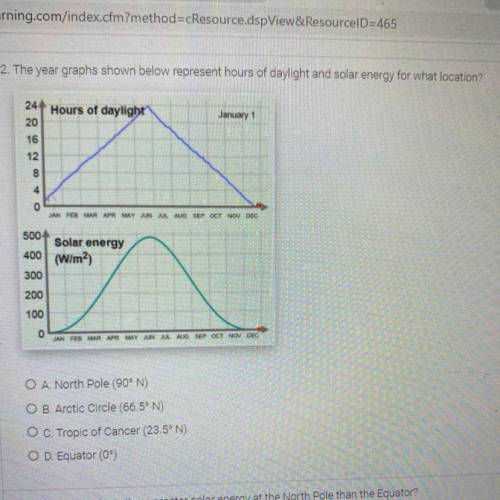
Chemistry, 06.05.2021 19:10 yasmincastor
2. The year graphs shown below represent hours of daylight and solar energy for what location?
Hours of daylight
January 1
24
20
16
JAN FEB MAR APR MAY NAG SER OCT NOV DEC
500
400
Solar energy
(W/m2)
300
200
100
0
AN FERM
APR MAY JUN AUG SEP OCT NOV 060
O A North Pole (90° N)
O B. Arctic Circle (66.5°N)
O C. Tropic of Cancer (23.5°N)
O D. Equator (0)


Answers: 1


Other questions on the subject: Chemistry



Chemistry, 22.06.2019 20:00, 20calzoy
There are two steps in the usual industrial preparation of acrylic acid, the immediate precursor of several useful plastics. in the first step, calcium carbide and water react to form acetylene and calcium hydroxide: cac2 (s) + 2h2o (g) → c2h2 (g) + caoh2 (s) =δh−414.kj in the second step, acetylene, carbon dioxide and water react to form acrylic acid: 6c2h2 (g) + 3co2 (g) + 4h2o (g) → 5ch2chco2h (g) =δh132.kj calculate the net change in enthalpy for the formation of one mole of acrylic acid from calcium carbide, water and carbon dioxide from these reactions. round your answer to the nearest kj .
Answers: 3
You know the right answer?
2. The year graphs shown below represent hours of daylight and solar energy for what location?
Hou...
Questions in other subjects:







Biology, 13.03.2020 22:44





